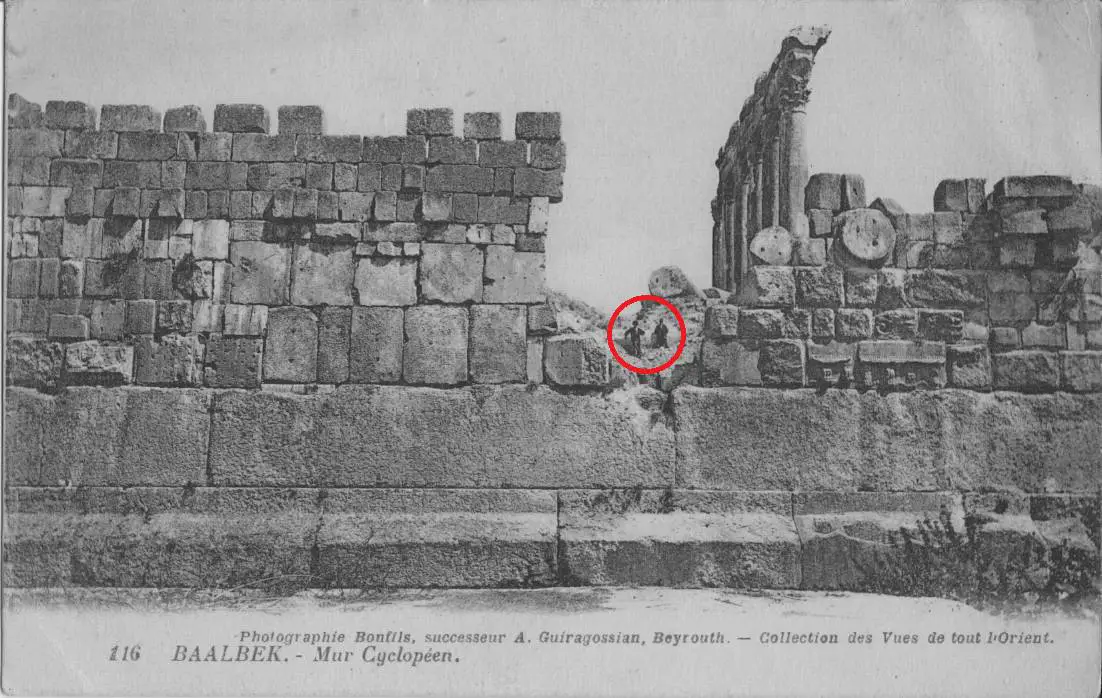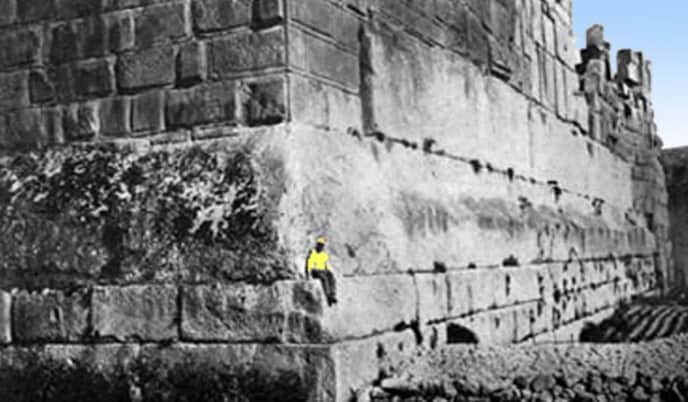
How would you explain ancient mankind quarrying, transporting and putting into place supermassive rocks that weigh over 100 tons, let alone 1000 tons? At Baalbek, we find perfectly fitted 1,500-ton stones forming a foundation not even a huge Roman temple could encompass. Our own science and engineering today cannot explain them.
What if, some unknown culture to history, could move these supermassive stones, place them on top of others, in perfect fit and alignment, before the dawn of our most ancient cultures?
Curiously, numerous ancient sites around the globe are considered by numerous authors as the ultimate evidence that thousands of years before written history, somehow, ancient culture managed to do it, apparently.
One of the most fascinating sites on the surface of the planet is located in Lebanon.
Baalbek is the name of an archeological site that was known in ancient Roman times as Heliopolis or City of the Sun. One of the most fascinating parts of Baalbek –and its holiest area in pagan times— was the so-called Temple of Baal, aka Temple of Jupiter.
It is important to note that mainstream experts have different points of view when it comes to the exact age of the site.
According to conventional archaeologists, it was a Phoenician sanctuary dedicated to the god Baal; it was a Greek City called Heliopolis (City of the Sun) and since the time of Emperor Augustus, it was a Roman colony.
The truth is, the exact age remains a mystery, but some researchers consider this ancient megalithic site as being at least 12.000 years old but could be over 20,000 years old.

While experts can trace some parts of this ancient site to specific dates, the oldest part of the ruins at Baalbek fit absolutely no known culture, and were originally employed for some mysterious purpose.
As noted on Bibliotecapleyades, the massive and elegant Roman stonework and columns pale by comparison to the megaliths they were built upon. The temple very visibly incorporates into its foundation, stones of some 1,500 tons. They are some 68 x 14 x 14 feet! They are the largest worked stones on earth! It is a mystery how such stones could have been moved into place, even according to our science and engineering knowledge of today. It is also a fact the Romans did not use this type of stonework.
To put how fascinating this ancient city is, the structures present at Baalbek are constructions that modern archaeologists and engineers cannot explain given the history and age that have been “officially” accepted. Some believe that history has got it all wrong when it comes to Baalbek.
Among the most intriguing of these megaliths is the Trilithon, and here is the cool part: three colossal blocks measuring 22 meters in length, 4.5 m high and 3.5 m wide.
Their weight ranges between one and two thousand tons. Can someone explain how this was achieved, thousands of years ago?
These three huge megaliths tones on a row of six blocks of granite that measure each, 10 meters in length and 4 height in height, weighing over 300 tons.
Some researchers argue that these megaliths are not “foundation stones” as they have always been declared as it appears as if it was essential that the largest of the stones were position on top, and not at the bottom making the whole edifice become an inverted structure.
It is noteworthy to mention that because nearly all of the stones are piled upon the other, we are able to see the evolution of the stonework.
Researchers believe that this reveals that some of the stones at Baalbek were piled on top of the megaliths are in fact older than Roman times. Interestingly, these stones are SUPERMASSIVE, yet despite their large size, they are literally dwarfed by the megalithic blocks found on site.
So how where the massive blocks put into position?
In 1977, Jean-Pierre Adam made a brief study suggesting the large blocks could have been moved on rollers with machines using capstans and pulley blocks, a process which he theorized could use 512 workers to move a 557-ton block (approximately 243 tons lighter than the Trilithon blocks)